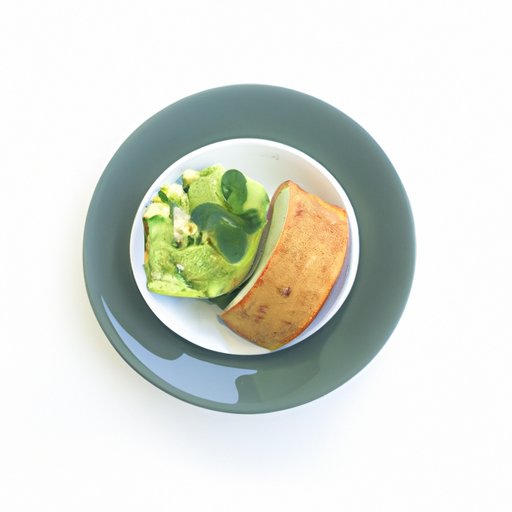
I. Introduction
Protein is an essential part of a healthy diet. It helps build and repair tissues, keeps you feeling full, and promotes muscle growth. However, many people struggle with adding enough protein to their diets. Some common problems include not knowing which foods to eat, feeling like they don’t have enough time to prepare protein-rich meals, or simply not liking the taste of certain high-protein foods. If you’ve encountered any of these problems, don’t worry – this article will provide solutions to help you add more protein to your diet.
II. Incorporating protein-rich foods into every meal
There are many types of protein-rich foods, including meat, fish, poultry, eggs, beans, and dairy products. To ensure you’re getting enough protein, try to include a source of protein in every meal. For breakfast, you may want to try incorporating eggs, Greek yogurt, or protein-rich smoothies. For lunch and dinner, opt for grilled chicken, fish, or a veggie burger. You could also add beans or lentils to your salads to increase protein content. Snacks like nuts, seeds, and jerky can also offer a protein boost.
III. Meal prepping
Meal prepping is a great way to save time during the week and ensure you’re eating healthy, protein-rich meals. Some options for high-protein meal prep include grilled chicken, roasted vegetables, quinoa or brown rice, and hard-boiled eggs. By cooking these items in larger quantities at the beginning of the week, you’ll have plenty of options to choose from and can pack them for work lunches or dinners on the go.
IV. Adding protein powders to drinks or smoothies
If you’re looking for an easy and convenient way to add protein to your diet, try incorporating protein powders into your drinks or smoothies. There are many different types of protein powders available, including whey, casein, soy, and pea protein. These powders can be added to water, milk, or almond milk to create a protein-packed drink that’s perfect for a post-workout snack or breakfast on the go. You could also try incorporating powdered peanut butter, flaxseed, or chia seeds into your drink for added nutrients.
V. Snacking on high-protein foods
High-protein snacks are a great way to keep yourself feeling full throughout the day. Try snacking on foods like roasted chickpeas, beef jerky, cheese sticks, or Greek yogurt with fruit. These snacks are easy to pack and can be eaten on the go. If you’re looking for something sweet, try making protein balls with ingredients like nut butter, oats, and protein powder.
VI. Experimenting with new recipes
If you’re tired of eating the same protein-rich foods every day, try experimenting with new recipes. There are many creative ways to incorporate protein into meals, such as making a tofu stir-fry, trying a lentil chili, or making a quinoa salad. By trying new recipes, you’ll discover new favorite foods and never get bored of eating the same thing.
VII. Choosing protein-rich sauces and toppings
Choosing the right sauces and toppings can make a big difference in increasing your daily protein intake. Try adding hummus to your vegetables, using Greek yogurt as a dressing for salads, or adding sunflower seeds to your oatmeal. Condiments like salsa and hot sauce can also add flavor without adding many calories.
VIII. Understanding portion sizes
Portion sizes are important to keep in mind when trying to increase your protein intake. The recommended daily intake of protein is about 0.8 grams per kilogram of body weight, or about 56 grams for the average sedentary man and 46 grams for the average sedentary woman. This can be easily achieved by following the tips above and measuring portion sizes. Use a food scale or measuring cups to ensure you’re not overeating and are consuming enough protein.
IX. Conclusion
Adding protein to your diet is crucial for overall health and wellbeing. By incorporating protein-rich foods into every meal, meal prepping, using protein powders, snacking on high-protein foods, trying new recipes, choosing protein-rich sauces and toppings, and understanding portion sizes, you can easily increase your daily protein intake. Be sure to track your intake and experiment with different foods to find what works best for you.
Remember that adding more protein to your diet doesn’t have to be complicated or overwhelming. Start with small changes and gradually incorporate more over time. Before you know it, you’ll be feeling healthier and stronger than ever before.




